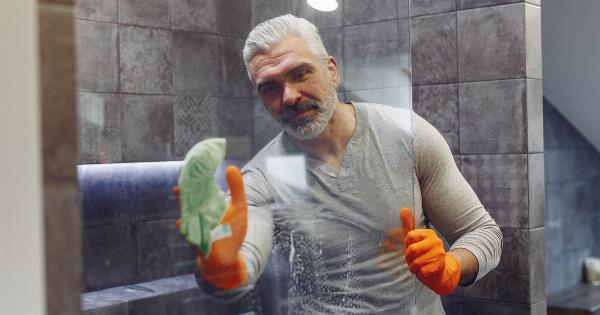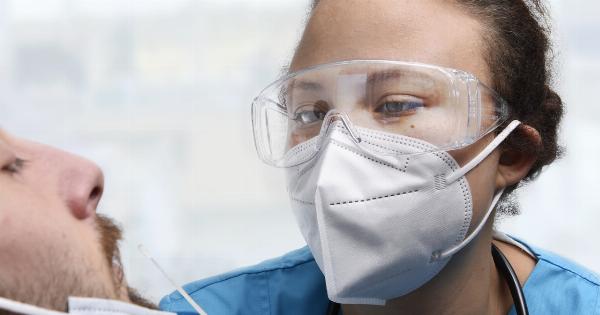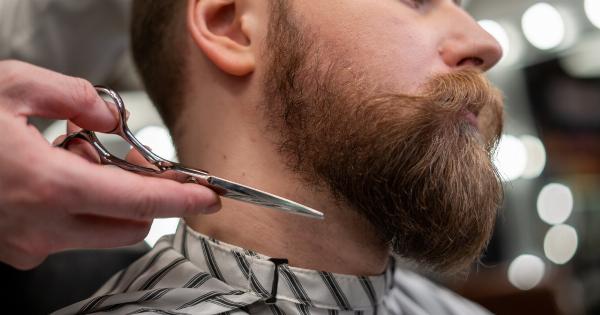Beards have become increasingly popular in recent years, with many men embracing the rugged and masculine aesthetic they provide. However, what many may not realize is that beneath the stylish exterior lies a dirty secret.
Research has shown that men’s beards can be dirtier than a kitchen sink, harboring a wide range of bacteria and germs. In this article, we will explore the reasons behind this alarming revelation and the steps men can take to keep their beards clean and hygienic.
The Bacterial Playground of a Beard
Beards can turn into a breeding ground for bacteria due to several factors. Firstly, the facial hair can trap dirt, dust, food particles, and other debris throughout the day. This accumulation provides an ideal environment for bacteria to thrive.
Additionally, the warm and humid conditions created under a beard can further promote bacterial growth.
Research conducted by scientists at the Hirslanden Clinic in Switzerland found that men’s beards contain more bacteria than the fur of dogs! The study involved swabbing the beards of 18 men and comparing the results with samples taken from dogs.
Shockingly, all beard samples showed high microbial counts, while only 23 out of the 30 dog samples exhibited the same. This finding highlights the need for men to pay more attention to the cleanliness of their facial hair.
A Glimpse into the Beard Bacteria Zoo
The specific kinds of bacteria found in men’s beards can range from harmless to potentially harmful. Staphylococcus aureus, commonly known as staph, is a type of bacteria found in many beards.
While some staph bacteria are harmless, others can cause serious infections if they enter the body through cuts or sores.
Another common bacterium found in beards is Enterococcus faecalis, which is usually found in the gastrointestinal tract.
Its presence in beards indicates poor hygiene practices and raises concerns about the potential transmission of fecal matter to others.
Furthermore, beards may also contain bacteria like Pseudomonas aeruginosa and Escherichia coli (E. coli), which can cause illnesses ranging from urinary tract infections to respiratory problems.
These bacteria can easily transfer from the beard to the face and mouth, increasing the risk of infection.
The Importance of Regular Beard Washing
Given the potential health risks associated with dirty beards, it is crucial for men to establish a regular beard washing routine. Simply rinsing the beard with water is not enough to remove all the accumulated dirt and bacteria.
Using a mild beard shampoo and warm water, gently massage the shampoo into the beard and then rinse thoroughly. This process should be repeated at least twice a week or more frequently if the beard becomes visibly dirty.
In addition to regular washing, it is important to keep the beard clean throughout the day. Men should avoid touching their beards unnecessarily, as this can transfer additional dirt and bacteria.
It is also recommended to comb the beard daily to remove any trapped debris.
Beard Oils and Balms: Friend or Foe?
Beard oils and balms have gained popularity among men as essential grooming products to maintain a healthy and soft beard. While these products can provide numerous benefits, it’s important to use them sparingly and choose wisely.
Some beard oils and balms contain ingredients that can clog pores or create a greasy environment, promoting bacterial growth.
Using oil-based products excessively can also make it harder to effectively wash away dirt and bacteria from the beard, increasing the risk of infections.
Men should opt for natural and lightweight beard oils or balms that are specifically formulated for beard care. These products can help moisturize and soften the hair without compromising cleanliness and hygiene.
Trimming and Regular Maintenance
Regular trimming and maintenance are essential to keep a beard clean and reduce the risk of bacteria buildup. Trimming the beard ensures that it remains neat and removes split ends that can trap bacteria.
Additionally, shorter beards are generally less likely to accumulate dirt and debris.
Investing in a high-quality beard trimmer or scissors and learning proper trimming techniques can make a significant difference in beard hygiene. Men should also consider visiting a professional barber regularly for precise trims and shaping.
The Dos and Don’ts of Beard Hygiene
When it comes to maintaining a clean and hygienic beard, certain practices are highly recommended, while others should be avoided.
Here are some dos and don’ts for beard hygiene:.
Do:
- Wash the beard regularly with a mild beard shampoo.
- Gently pat the beard dry with a clean towel.
- Apply a natural and lightweight beard oil or balm sparingly to moisturize and soften the hair.
- Comb the beard daily to remove debris and tangles.
- Trim the beard regularly to maintain cleanliness and reduce bacterial buildup.
Don’t:
- Touch the beard unnecessarily throughout the day.
- Overuse oil-based beard products.
- Ignore visible dirt or debris in the beard.
- Share beard grooming tools with others.
Conclusion: Keeping Your Beard Clean and Healthy
While beards can undoubtedly enhance a man’s appearance, they can also become a haven for bacteria if not properly maintained.
Understanding the potential health risks associated with dirty beards and implementing an effective beard hygiene routine is essential for the overall well-being of men with facial hair.
Regular washing, minimal use of appropriate beard oils or balms, and maintaining a tidy beard through trimming are key practices to ensure a clean and healthy beard.
By following these guidelines and staying mindful of proper beard hygiene, men can confidently rock their beards without compromising their cleanliness.































